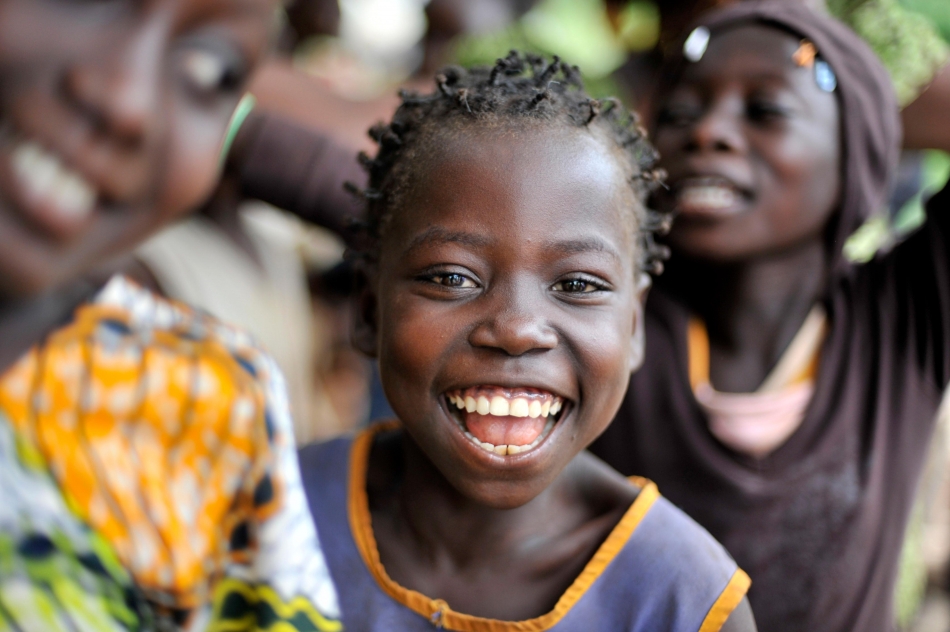Reshaping agriculture in Africa to end child labour

It is an alarming fact that there are more children engaged in child labour in sub-Saharan Africa than in the rest of the world combined. Nearly 82 percent of them work in agriculture. The majority of these children are assisting their parents in producing crops, rearing livestock or catching fish, mainly for family consumption.
Not all this work is considered child labour. Age‑appropriate tasks that are not hazardous and do not interfere with a child’s education can be positive for the family and even contribute to the inter-generational transfer of valuable skills that boost families’ food security. In fact, addressing hunger and poverty, the root causes of child labour, can help tackle the issue.
For too many children though, their work, particularly in agriculture, goes beyond the limits of safety and well-being and crosses into a form of labour that can harm their health or educational opportunities.
As the world marks the World Day Against Child Labour on 12 June, here are four examples of the work FAO is doing to tackle this issue from the field right up to the global level, to ensure that children have a childhood.
1. Offering a ‘School in a field’ in Uganda
In Uganda, at least 2 million children are estimated to be involved in child labour, with the vast majority working in the agricultural sector.
Through Junior Farmer Field and Life Schools (JFFLS), FAO is tackling child labour by promoting quality education for children and helping them acquire age-appropriate farming skills that contribute to their food security.
Before joining FAO’s ‘School in a field’, 17-year-old Josephine used to have the dangerous task of collecting firewood for her family. She had done this since the age of seven. After the JFFLS, she learned other ways of supporting her family: “It [JFFLS] has given me a lot to do…I have gained a lot of knowledge,” Josephine says.
16-year-old Peter also began working when he was young. “The reason why my parents did not want me to go to school is that they needed me to look after the family’s livestock and saw no value in education,” he says.
Now, Peter is involved in JFFLS and says, “I want to become a teacher so that I can also teach others what I have learned.”
Michael Lokiru, FAO Programme Officer in Uganda, says of the JFFLS that, “It has been a positive experience because children are reporting fewer and fewer cases of parents being resistant to having them go to school.”
2. Creating policy change
Ending child labour in agriculture must happen in politicians’ offices as well as in farmers’ fields. FAO has developed a framework on ending child labour in agriculture, which acts as a guide for policy makers, and has supported some countries to develop national action plans against child labour.
In Uganda, FAO has provided policy and institutional support, particularly in addressing child labour in livestock rearing and occupational health and safety in the maize and dairy value chains. This work has resulted in the government incorporating child labour prevention into national policies.
“We believe that it is important that we continue to generate context-based knowledge and evidence for policy makers on ending child labour in agriculture,” says FAO Representative in Uganda Antonio Querido.
Through a European Union-funded project in Cabo Verde, FAO carried out a national survey on pesticide practices, including children’s exposure to harmful chemicals. The results led to the Ministry of Agriculture and Environment identifying alternatives to hazardous chemicals and promoting the alternatives to farmers through Farmer Field Schools.
“The Rotterdam Convention on Hazardous Pesticide Management has been an entry point to engage with the Ministry of Agriculture on the fight to end child labour,” says Ana Laura Touza, FAO Representative in Cabo Verde.
3. Advocating for rural children’s futures
FAO helped found the International Partnership for Cooperation on Child Labour in Agriculture, with the International Labour Organization, the International Union of Food, Agricultural, Hotel, Restaurant, Catering, Tobacco and Allied Workers’ Associations and other partners, and since 2007 has been working with governments to promote policy measures to curb child labour.
A major breakthrough in FAO’s advocacy efforts has been the inclusion of ending child labour in agriculture as a top priority in the Durban Call for Action, alandmark document adopted during the Fifth Global Conference for the Elimination of Child Labour, which included thousands of government delegates, workers’ organizations, United Nations agencies, civil society and regional organizations. Thanks to FAO’s efforts, ending child labour in agriculture is a top priority in the document, which helps to commit the signatories to action.
4. Highlighting the connection between climate change and child labour
In a new report, FAO is spotlighting the link between climate change and child labour. The increasing frequency and intensity of extreme weather events is hitting rural livelihoods and forcing some children to work at greater intensity and duration.
In Ethiopia for example, heavy rains were found to be more likely to increase the incidence and intensity of work for boys, when rural households are forced to turn to children for help with clean-up and repairs.
“As these instances of climate shocks increase, the demands placed on children to work more often and for longer may increase as well,” said Ariane Genthon, FAO expert on issues of child labour.
To more quickly realize the vision of a world without child labour, FAO has established the Child Labour in Agriculture Prevention Facility, which will catalyse partnerships and investments to strengthen rural communities and give rural children better futures.
